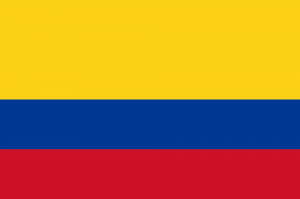 Population of Colombia
Population of Colombia
Based on the total number of births, total number of deaths, net migration rate, and the population of 2013, the population of the Republic of Colombia for 2014 is estimated at 47,527,060, which makes up about 0.66% of the world’s total population. Colombia is ranked 27th in the world population rankings, behind South Korea, but ahead of Spain. As of February 2012, the population of Colombia was estimated at 47,072,915. Thus, since 2012, the population has grown by 454,145 people or by a growth rate of 0.96%. The last census in Colombia was conducted in 2005. The results of the census indicated that the population was 42,888,592. Thus, since the last census was conducted, the population has grown by 4,638,468 or by a growth rate of 10.82%. Based on the total land area and the population of the country, the population density of Colombia is estimated at 45.64 people per square kilometer or 118.22 people per square mile.
Government of Colombia
The 1991 Constitution of Colombia establishes the government of Colombia as a presidential representative democratic republic and is divided into the executive, legislative, and judicial branches. The executive branch consists of the president, vice president, and the Council of Ministers. The president serves as the head of government and the head of state. The current president is Juan Manuel Santos, a member of the Social Party of National Unity. The current vice president is Angelino Garzon, also a member of the Social Party of National Unity. The legislative branch is a bicameral legislation, made up of the Chamber of Representatives and the Senate. The Chamber consists of 166 members and the Senate consists of 102 members. While the Senate members are elected nationally, the Chamber members are elected based on electoral districts. The current President of the Chamber is Hernan Penagos, a member of the Social Party of National Unity, and the current President of the Senate is Juan Fernando Cristo Bustos, a member of the Colombian Liberal Party. The judicial branch consists of the Supreme Court of Colombia, the Council of State, the Constitutional Court, and the Superior Council of Judicature. The Supreme Court consists of 23 justices, which are split up into the Penal, Civil and Agrarian, and Labor chambers. The current president of the Supreme Court is Ruth Marina Diaz Rueda. Lastly, the major political parties are the Liberal Party, Conservative Party, and the Social Party of National Unity.
Poverty in Colombia
In 2012, Colombia scored 0.719 in the Human Development Index, which ranks 91st out of 187 countries. The score is higher than the world average of 0.694, but below the average score for Latin America and the Caribbean. In 2010, 8.2% of Colombians were believed to live in absolute poverty, which means that the people live on less than $1.25 per day. However, 15.8% of people live on less than $2 per day and 34% live below the national poverty line. As of January 2014, the unemployment rate in Colombia is 11.1% of the labor force. Lastly, around 150,000 – 200,000 people are internally displaced every year and 83% of the internally displaced people are thought to live in extreme poverty.
Education in Colombia
While it is not mandatory, many Colombian children begin their educational career with preschool until age 5. After preschool or starting at age 5, students begin what is known as basic education. Basic education is split up into primary basic education and secondary basic education. According to administration data, 87.4% of students that begin basic education complete the basic education. Following basic education is middle vocational education, which consists of tenth and eleventh grade. Depending on the school that a student attends, a student may be able to focus on academics, business, or some specific vocation that he or she wishes to pursue. If a student wishes to enter into higher education following the middle vocational education, he or she must take and pass the Saber 11 examination. Once he or she graduates from the middle education, he or she will receive a high school diploma. Higher education consists of undergraduate professional studies, technical, technological and intermediate professional education, and post-graduate studies. Thus, there are options for those students who wish to pursue a specific career instead of continuing in academics.
In 2011, Colombia spent 4.4% of its Gross Domestic Product on education, which is one of the highest rates in all of the Latin America. The total adult literacy rate is 93.6% of the adult population. 97.8% of male youths are literate and 98.7% of female youths are literate. Lastly, the school-life expectancy is 13.6 years from start to finish.
 Geography of Colombia
Geography of Colombia
Out of the total land area of 1,141,748 square kilometers or 440,831 square miles, there are six main natural regions in Colombia: Andes Mountains, Pacific coastal region, Caribbean coastal region, the plains region, the Amazon Rainforest, and the insular area. Colombia borders Ecuador, Venezuela, Brazil, Peru, Panama, the Atlantic and Pacific Oceans, and the Caribbean Sea. It is also a part of the geographic region known as the Ring of Fire, which consists of 91% of the world’s total earthquakes and 80% of the world’s largest earthquakes. Lastly, over 11% of the land area of Colombia is protected area as a part of the National Park System.
Health and Health Care in Colombia
The 1991 Colombian Constitution stated that every Colombian citizen has a right to social security. Then, in 1993, Law 100 created a National Obligatory Health Insurance, which consists of contributive and subsidized regiments. In the contributive regimen, both employers and employees contribute 12.5% of his or her paycheck to health insurance companies similar to HMOs. These organizations then contract for services with the health facilities throughout the country. The subsidized regimen covers about 51% of Colombians and covers the poor, unemployed, and indigent that cannot contribute to the health care system themselves. Other than taxes, this portion is paid for through a 1.5% contribution out of the 12.5% taken out of checks, so that everyone may be in solidarity together. Overall, about 96% of Colombians are covered in one way or the other. However, while in theory the system was supposed to work well, there have been many issues in regards to waiting times, denial of treatment, and denial of certain services.
As of 2010, there were 1.5 physicians, 10 hospital beds, and 6.2 nurses or midwives per 10,000 residents. The per capita health expenditure is $518 and the total expenditure on health as a percentage of Gross Domestic Product is 7.6%, of which, the government contributes 72.7%. While 92.9% of Colombia uses improved drinking water sources, only 72.5% of those in rural areas use such sources. Overall, 78.1% use improved sanitation facilities, but only 65.4% of those in rural areas use such facilities. The under-five mortality rate is 18 deaths per 1,000 children and the infant mortality rate is 15 deaths per 1,000 infants. The overall life expectancy is 73.8 years and women are expected to live much longer than men. Lastly, about 0.5% of the population has been diagnosed with HIV.
Colombia Profile
 Chile Population 2014
Chile Population 2014 Education in Chile
Education in Chile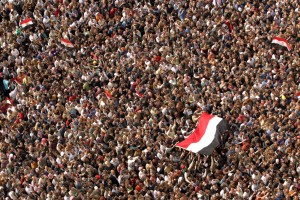 Egypt Population 2014
Egypt Population 2014 Health Care in Egypt
Health Care in Egypt Egyptian Pyramids
Egyptian Pyramids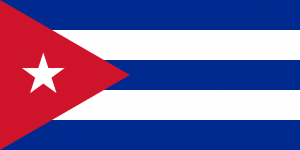 Population of Cuba
Population of Cuba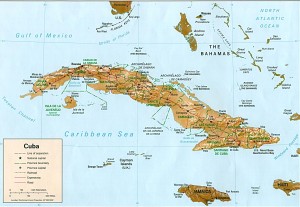 Geography of Cuba
Geography of Cuba Education in Cuba
Education in Cuba Population of Greece
Population of Greece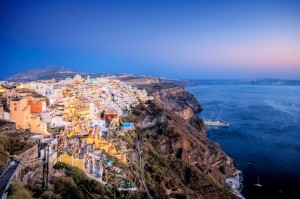 Greece Population Projections
Greece Population Projections